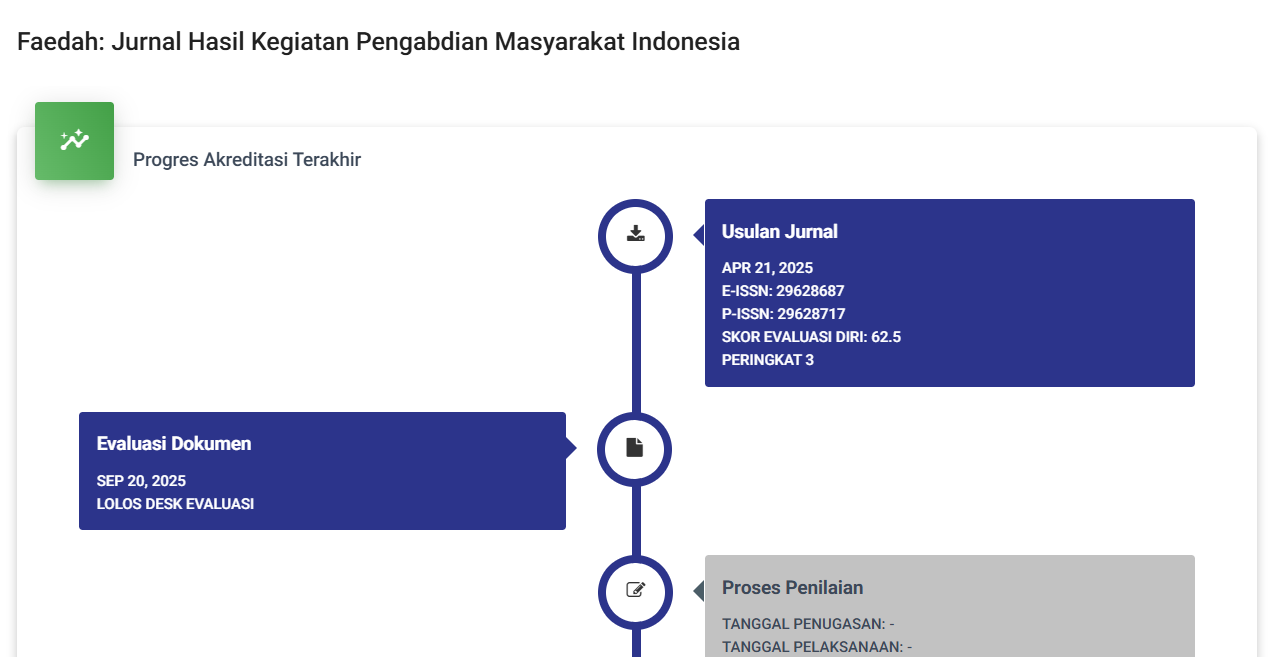Edukasi tentang Shivering sebagai Komplikasi Anestesi dan Cara Penanganannya untuk Pasien dan Keluarga
DOI:
https://doi.org/10.59024/faedah.v2i1.1350Keywords:
Anesthesia, Complications, ShiveringAbstract
Shivering is one of the complications that often occurs after anesthesia due to impaired body thermoregulation. This condition can cause discomfort, increase oxygen consumption, and prolong the patient's recovery period. Education about shivering is very important for patients and families so that they understand the causes, risks, and how to handle it. This education program is carried out using a counseling method that involves educational media in the form of leaflets and demonstrations of effective handling techniques, such as the use of warm blankets, giving warm fluids, and relaxation techniques. Evaluation is carried out by measuring the level of understanding of patients and families before and after education, through a prepared questionnaire. The evaluation results showed a significant increase in understanding about shivering and how to handle it, both in theory and practice. This increase shows that the education provided is effective in increasing the readiness of patients and families in dealing with post-anesthesia shivering. This program is expected to reduce the negative impact of shivering and accelerate the patient's recovery process.
References
Def, M., Sukmaningtyas, W., & Utami, T. (2022). Hubungan lama operasi dengan kejadian shivering pada pasien post operasi dengan teknik regional anestesi di RSUD dr. R.M. Pratomo. Jurnal Kesehatan.
Febriyanti, K. N. (2020). Hubungan jenis pembedahan dengan shivering intra operasi pada pasien spinal anestesi di ruang operasi RSAD TK II Udayana. Jurnal Sains dan Kesehatan.
Hidayah, E. S., Khalidi, M. R., & Nugroho, H. (2021). Determinan faktor hipotermi pasca operasi dengan general anestesi di Instalasi Bedah Sentral RSUD Banten. HEME: Health and Medical Journal.
Hidayah, E., Khalidi, M., & Nugroho, H. (2021). Shivering pasca-anestesi: Mekanisme dan penanganan pada pasien anestesi umum dan regional. Jurnal Kesehatan.
Millizia, C., et al. (2020). Meta-analisis faktor yang mengakibatkan post-anesthesia shivering: Usia, suhu tubuh inti, dan durasi operasi. Jurnal Anestesiologi.
Mulyandari, R. (2020). Hubungan lama bedah abdomen dengan kejadian shivering pasca general anestesi di IBS RSUD Wates Kulonprogo (Doctoral dissertation).
Nafidah, D. (2021). Faktor-faktor yang memengaruhi kejadian shivering pasca operasi dengan anestesi umum dan anestesi spinal di RSUD Abdul Wahab Sjahranie Samarinda. Naskah Publikasi.
Silvika, A. B., & Handayani, N. (2022). Pengaruh penggunaan selimut hangat terhadap suhu tubuh pasien shivering pasca operasi dengan spinal anestesi di IBS RS PKU Muhammadiyah Gamping. Naskah Publikasi. Universitas Aisyiyah Yogyakarta.
Wiyono, M. (2021). Faktor-faktor yang berhubungan dengan shivering pada pasien post operasi menggunakan teknik spinal anestesi di RSUD dr. Mohamad Soewandhie Surabaya. Naskah Publikasi.
Downloads
Published
How to Cite
Issue
Section
License
Copyright (c) 2023 Faedah : Jurnal Hasil Kegiatan Pengabdian Masyarakat Indonesia

This work is licensed under a Creative Commons Attribution-ShareAlike 4.0 International License.









